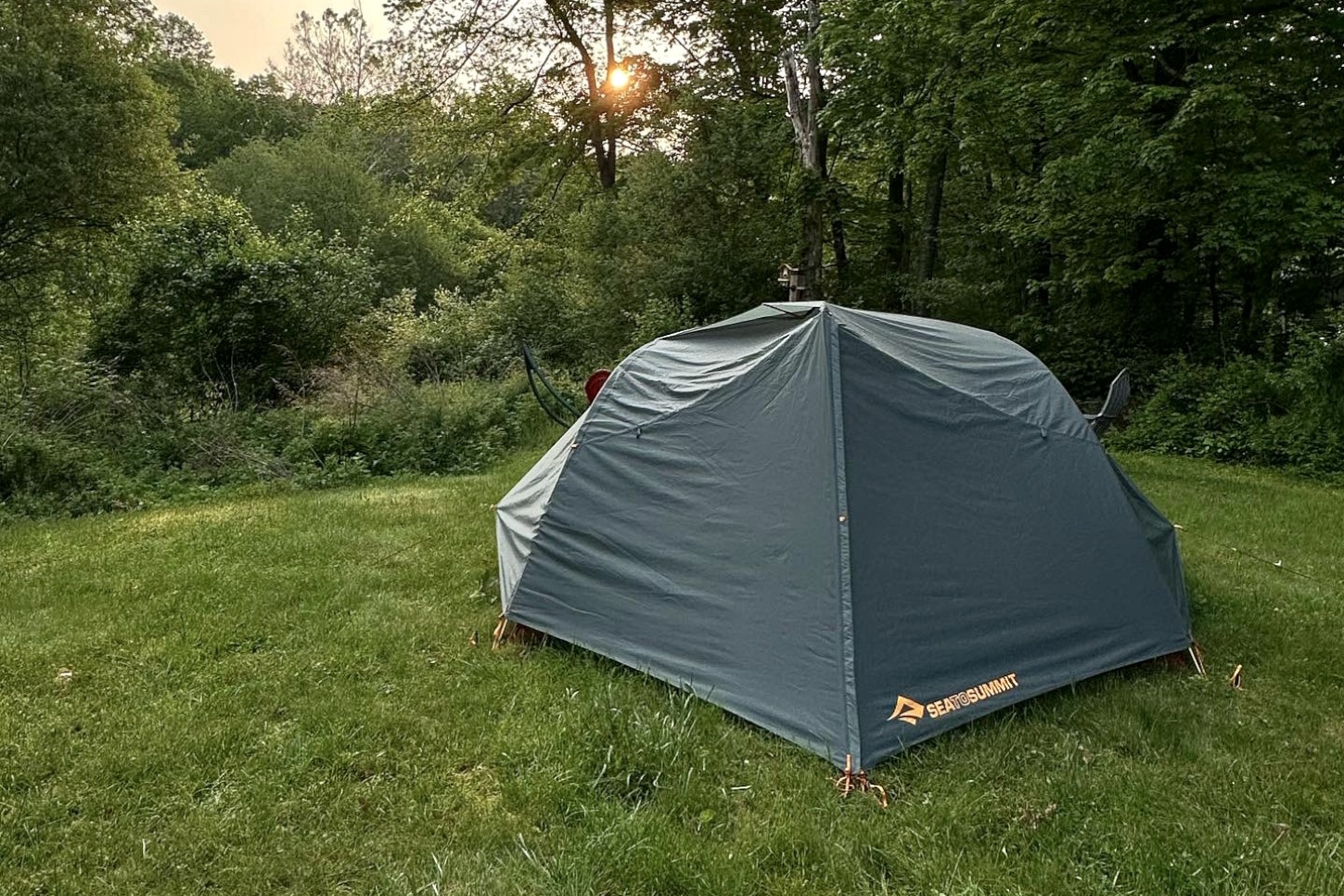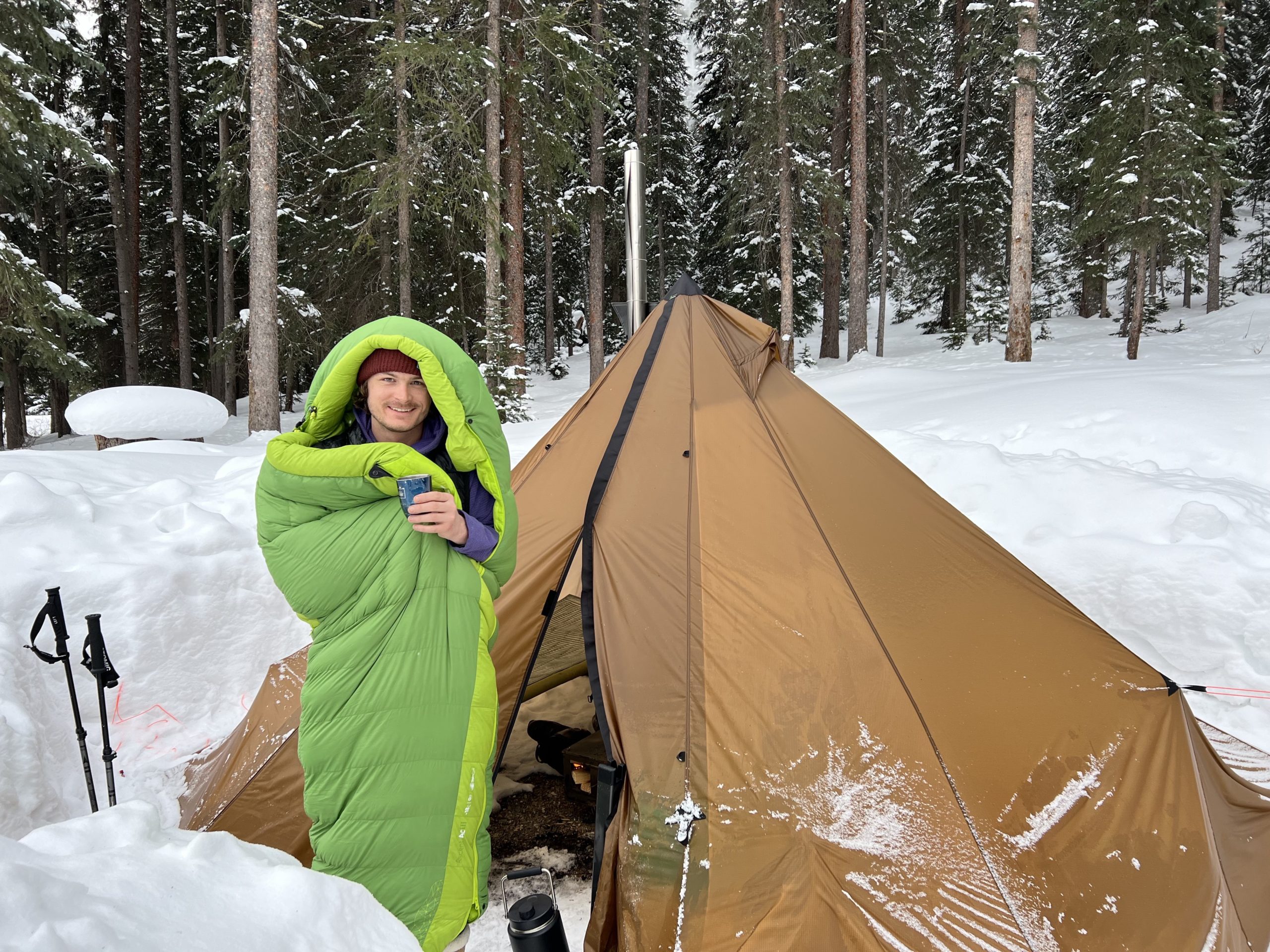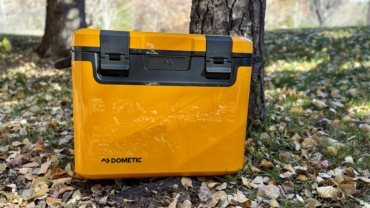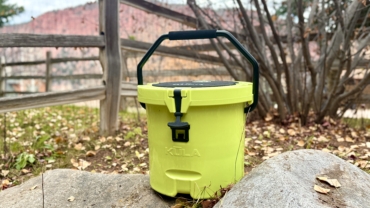I had never heard the term “comfort-backpacking tent” before reading Sea to Summit’s description of the new three-season Ikos TR3 tent. Now I think it’s the greatest thing since sliced bread. Because that’s exactly what the TR3 is. It’s not heavy or bulky enough to be considered a car camping tent. But it provides more room and better ventilation than your typical three-person backpacking tent.
Sea to Summit recently let me use and abuse a sample of the Ikos TR3. I left the tent set up in the yard after my test just case I wanted to sleep in it again randomly. Even after I took it down to test other tents, I ended up putting it back up for a couple of extra nights.
This tent is actually designed to fit three people comfortably. My kids, our dog, and I loved the accommodations and found them more than ample.
In short: Like the Alto and Telos ultralight tents that preceded it, Sea to Summit’s Ikos TR3 tent optimally utilizes internal space. It has exceptional ventilation through design and is totally versatile — it can even be set up in six different configurations. After this extended period of testing, I’ve concluded that Sea to Summit’s Ikos TR3 sets a high mark for the brand’s tents. The Ikos TR3 might just represent the future of lightweight family camping shelters.
- Type: Comfort backpacking
- Seasons: 3
- Weight: 6 lbs., 15.7 oz.
- Waterhead: 1,800 mm / 70"
- Doors: 2
- Sleeps: 1-3
- Floor dimensions: 90.5 x 78.7"
- Height: 48"
- Carry size: 8" x 20"
- Price: $529
Pros
- Easy to set up
- Extra space without a larger footprint
- Advanced ventilation
Cons
- I wish I had the footprint as well
Sea to Summit Ikos TR3 Tent Review
For a company that hadn’t made a tent up until a couple of years ago, it’s very obvious that Sea to Summit took a lot of time to do its homework. From ease of use to improved ventilation to its architecture, this tent has been designed to weather the storm — comfortably.
Unlike some three-person backpacking tents I’ve used, the TR3 actually has enough room for three people and then some. This extra internal room literally gives you room to breathe and is a welcomed improvement in family camping tents (kids are smelly).

Design and Features
Construction-wise, the Ikos series is made with a 68-denier polyester base and ripstop polyester rainfly. The canopy fabric is 20-denier polyester mesh. It offers three-season protection, with two doors, all held together and aloft by one single pole. And with the rainfly vestibule, you get an extra 24.5 square feet of covered storage outside of the tent.
It’s worth reiterating how well the internal space is being utilized in the TR3. The tension ridge opens up the ceiling width, so it isn’t vaulted and narrow at the top, but boxier and wider. And with 48.4 inches of height, you’ve got more room for loading in, loading out, getting changed, and mulling about. For more info on the specs and materials, check out our original article on the Ikos’ release.
The deep tubbed floor with its 12-inch vertical walls provides more sleeping and socializing space too. So, you and your tent mates aren’t shoulder to shoulder or jostling one another in the night.
Combining these aspects with the Baseline Vent gives you ample ventilation to keep you comfortable, even in the stickiest of summer storms. This vent allows you to control the temperature and humidity inside. For best airflow, Sea to Summit recommends facing one of the vents into the wind.

Poles, Pegs, and Carry Bags
The TR3 features a widely adopted external pole design that utilizes clips instead of sleeves to hold up the tent — not unlike those made by Big Agnes or other brands. This makes setting up and breaking down nearly effortless. In fact, I didn’t read the instructions until I was lying in the tent getting accustomed to the accouterments.
The DAC MX pole set is even coated using a new eco-conscious method of anodizing. The Ikos series is Sea to Summit’s first tent to use this.
Rounding it all out, the TR3 comes with a set of overengineered, but awesome tent pegs and all the reflective guy lines you need to set the Ikos up for optimal anchoring and ventilation.
First Impressions
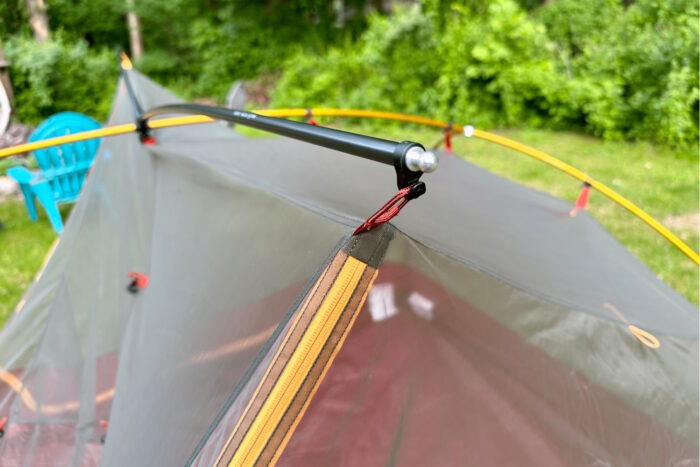
There’s been a ton of innovation in the world of tents, and in that, there have been a lot of crazy shapes. But the TR3 is symmetrical, and that improves all aspects of your interaction with the tent.
The first time you pull the pole set out of its storage bag and realize it’s all one big DAC structure shaped by hubs and held together by shock cord, you get clued into how easy this is all going to be. I’ve been dealing with hub-style pole systems since the early 1990s, and I am happy to see how advanced the setup for the TR3 is. It lays out like a petroglyph of a wild animal — with two front legs and two back legs — and the addition of a center pole creates Sea to Summit’s Tension Ridge.
That Tension Ridge is where all the extra headroom comes from. It’s not that the TR3 is bigger than the average three-person tent on the market, it’s just utilizing its space better.
When you add it all up and throw in the deep tubbed floor and taller vertical walls, you find yourself living in a much larger space that doesn’t have an increased footprint. It’s a space that could be comfortable through all of the three seasons that it’s rated for, no matter the weather.
In the Field

The first time I put up the TR3, I laid the tent down with the pole system on top of it and had it all up and ready for habitation in less than 3 minutes. In total, with the fly on it and everything staked out, it took me a little over 7 minutes.
I was wicked happy to find how easy it was to index the pole tips to the anodized aluminum tent feet. This kept them in place as I went corner to corner. It was just as easy to connect the aluminum tips of the rainfly to the tent feet as well. Being that everything is symmetrical, there was no need for color coding or scanning a barcode to watch an instructional video to get the job done.
From there, you clip the tent to the poles, and voilà. There’s no running of poles through sleeves. Nothing tricky.

Room to Breathe
That night, the girls, the dog, and I moved in, with plenty of gear to really test the limits of the space inside. My kids are both under 10. But the dog is a solid 75 pounds, and we all had plenty of room and room for our gear.
So, life without a rain cover and its included vestibules wouldn’t be an issue. That’s even if you had three full-grown adults inside, with the same dog and gear. Hell, with the vestibule, you could bring a bigger dog and even more gear and still be fine inside, even if you were confined in a rainstorm.
When it came time to break the tent down, it took 5 minutes. That included rolling it up to get it back in the bag. The beauty of the TR3 is that the sack is oversized so you don’t need to struggle. But it can also be compressed so you can manage its bulk.
All in all, I had the tent set up for 2 weeks in May, in Connecticut. The girls and the dog spent 2 nights with me in it, and I spent the other 3 nights out there on my own. Each day was in the 60s and dry, aside from one afternoon when there was a brief, but soaking, storm that rolled through. The nights were in the 40s, which was cool, but comfortable, with dew-covered mornings.
Not once was the tent wet on the inside, even with the floor of the tent being cold to the touch overnight and in the morning.

Optimus Prime: 6 Configurations for a Single Tent
A trend with new tents is the ability to set them up in different configurations for different settings and situations. It’s a bit of a novelty, but it lets you get more out of your investment.
Where most tents can be set up in two or three configurations, the TR3 can be set up in six different modes.
Classic Mode
All the bits and pieces. This is the standard setup with the tent and rainfly to provide the most protection from the elements and privacy.
Fly-Only Mode
Just the fly and pole set. Ideal for fast pitches where the weather is unpredictable and you need shelter fast.
Inner-Only Mode
Just the tent and pole set. Leave the fly at home and enjoy the moon and stars.
Dry Setup Mode
All the bits and pieces, just set up differently. This mode allows you to set up the fly first so you’re out of the elements when setting up the tent.
Partial Fly Mode
Uses all the bits and pieces. This mode allows you to roll back the fly for more exposure and ventilation.
Hangout Mode
Fly only. This mode requires you to purchase an additional pole set or use trekking poles. Hangout mode allows you to convert the TR3 rainfly into a standalone shelter.
Sea to Summit Ikos TR3: Conclusion

Between you and me, I’m hoping Sea to Summit lets me keep the Ikos TR3. It’s everything I would expect from a high-end, lightweight three-person backpacking tent, baked into what could be the blueprint for the next generation of family backpacking tents. Or, as Sea to Summit calls it — a three-person “comfort backpacking” tent.
From its optimal use of interior space and top-notch ventilation to its overall ease of use, the Ikos TR3 takes the guesswork out of setting up and taking down a tent. It also eliminates the stereotypes about ventilation and confined living quarters in family-oriented backpacking tents.
I’m well aware that a lot of tents these days are easy to set up and are built to weather a seasonal storm. But my experience with the TR3 leads me to believe that the only other three-person backpacking tents on the market that are this finely tuned are the Sea to Summit Alto and Telos.
So, welcome to the party, Sea to Summit. Tents are totally your thing.

